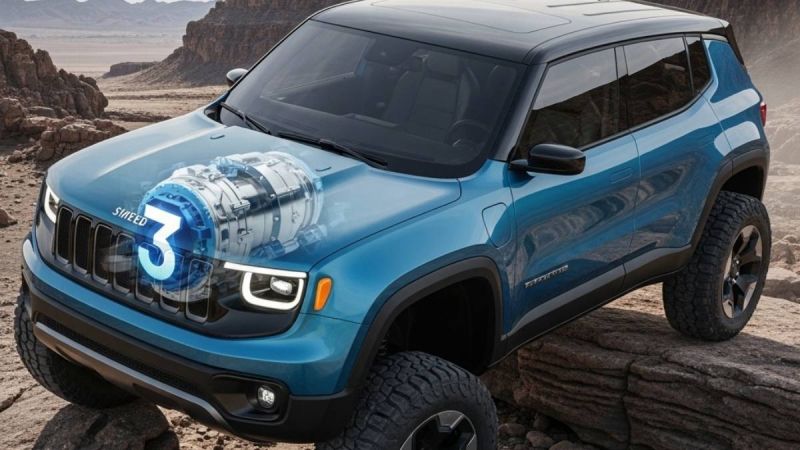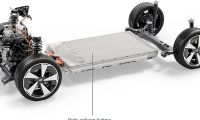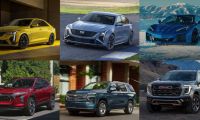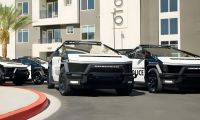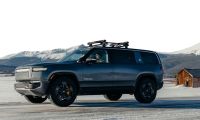The electric vehicle revolution, while promising instant torque and silent propulsion, has largely standardized on single-speed transmissions. Performance EVs like the Porsche Taycan and Audi e-tron GT have nudged the envelope with two-speed setups, primarily for off-the-line acceleration and high-speed efficiency. But here in Bend, where rugged terrain is as common as a craft brewery, Jeep (under its parent company Stellantis) is making a bold statement with its latest announcement: a three-speed automatic transmission designed specifically for EVs. This isn't just about adding another gear; it's a strategic move that could redefine electric vehicle performance, battery efficiency, and, most crucially, elevate off-road capability for the electric future.
Beyond the Single Speed: Unlocking EV Potential
The prevailing wisdom in EV design has been that electric motors' wide and flat torque curve negates the need for multiple gears. A single-speed reduction gear is simpler, lighter, and more cost-effective. However, this simplicity comes with compromises. As experts point out, while electric motors deliver maximum torque from zero RPM, they don't operate at peak efficiency across their entire speed range. A multi-speed transmission allows the motor to operate in its optimal efficiency zone for a much higher proportion of the time, significantly improving overall energy efficiency and extending range. This means you could potentially get more miles out of the same battery pack, or achieve the same range with a smaller, lighter, and more affordable battery.
Furthermore, multiple gears can provide better acceleration at both low and high speeds, addressing the compromise between top speed and hill-climbing ability often seen in single-speed EVs. It's like giving your EV an extra lung – it can breathe easier whether sprinting or cruising.
A New Level of Off-Road Prowess: Why Three is the Magic Number
For a brand synonymous with off-road capability like Jeep, the three-speed EV transmission is a true game-changer. Traditional 4x4s rely heavily on transfer cases with low-range gearing to provide the sustained high torque needed for rock crawling, deep snow, sand, or heavy towing. Current single-speed EVs, despite their impressive instant torque, often struggle to provide this sustained low-speed, high-torque operation without overheating the motor or draining the battery excessively.
Stellantis's patent outlines a compact solution using planetary gear sets and clutches to create three distinct gear ratios, including a dedicated "1st Gear" that functions as a true low-range or 4-LO equivalent. This mechanical trickery gives electric Jeeps the "stump-pulling torque" drivers expect from gas or diesel 4x4s, enabling capabilities like:
- Low-speed crawling: Crucial for precise maneuvering over difficult obstacles.
- Heavy towing and vehicle recovery: Sustained torque delivery without overtaxing the motor.
- Enhanced traction in challenging conditions: Better management of power delivery on snowy or sandy surfaces.
This innovation effectively bridges the gap between EV powertrain characteristics and the demanding requirements of extreme off-roading, positioning Jeep to deliver "Zero Emission Freedom" (Jeep's Electrification Strategy) without compromising its legendary capability.
Beyond Two Speeds: How Jeep Surpasses Others
While some performance EVs like the Porsche Taycan and Audi e-tron GT (which I drive) have adopted two-speed transmissions, primarily for acceleration and top-speed efficiency, Jeep's three-speed approach offers an even more refined solution, especially for multi-purpose vehicles like SUVs and trucks. These two-speed setups typically use one gear for rapid off-the-line acceleration and another for highway cruising. Jeep's three-speed goes further, adding a dedicated ultra-low gear for the extreme torque and control needed for true off-road adventures, a distinction that sets it apart from more road-biased applications. Mercedes-Benz has also explored two-speed transmissions for its EVs, noting the investment is worthwhile for a "non-compromised blend of power and efficiency". Jeep is clearly taking this concept to the next level for its rugged lineup.
Positioning Jeep for the Electric Future
This three-speed automatic transmission is more than just a single technological advancement; it's a pivotal component in Jeep's comprehensive electrification strategy. Jeep aims to introduce four all-electric SUVs in North America and Europe by the end of 2025, with 50% of its US sales and 100% of European sales being all-electric by 2030. Innovations like this gearbox are crucial to ensuring that these electric models not only meet but exceed the off-road prowess of their internal combustion engine predecessors, addressing a key concern for its loyal customer base. By proving that electrification can enhance, not dilute, its rugged image, Jeep is solidifying its position as the leading electrified SUV brand globally.
Wrapping Up: Jeep's Triple Threat in EV Capability
Jeep's announcement of a three-speed automatic transmission for its electric vehicles marks a significant evolution in EV powertrain technology. Moving beyond the prevalent single-speed and even the two-speed setups of other performance EVs, this innovation promises not only improvements in overall efficiency and on-road performance but, critically, unlocks unprecedented levels of sustained low-speed torque for extreme off-road use. By addressing a fundamental capability gap for electric 4x4s, Jeep is strategically positioning itself to lead the charge in the electric adventure segment, ensuring its iconic capability remains undiluted in the transition to zero-emission freedom. This is a powerful statement about the future of electric mobility, proving that even the toughest trails can be conquered, silently and efficiently.
Disclosure: Image Rendered with Gemini
Rob Enderle is a technology analyst at Torque News who covers automotive technology and battery developments. You can learn more about Rob on Wikipedia and follow his articles on Forbes, X, and LinkedIn.



